Spondylolisthesis can cause debilitating back pain and disrupt your daily activities. Whether it’s from an injury, age-related changes, or congenital factors, we specialize in providing customized care to relieve symptoms and restore mobility. Don’t let spondylolisthesis hold you back – take control of your spine health today.
Based on +500 Reviews
Spondylolisthesis is a spinal condition where one vertebra slips forward or backward over the vertebra below it. This misalignment can cause pressure on the spinal cord or nerve roots, leading to pain, stiffness, and other symptoms. It most commonly occurs in the lower back (lumbar spine) and can result from degenerative changes, injury, or congenital conditions. In some cases, spondylolisthesis may cause no symptoms at all, but when it does, it can lead to discomfort, numbness, or weakness, often affecting mobility. Treatment options depend on the severity of the condition and its impact on daily life.
Spondylolisthesis may present with a variety of signs and symptoms, depending on the severity of the condition. Common symptoms include lower back pain, which can worsen with activity or prolonged standing. In more severe cases, the slipped vertebra can put pressure on the spinal nerves, leading to symptoms such as leg pain, numbness, or tingling, particularly in the thighs, buttocks, or lower legs. Weakness in the legs and difficulty walking can also occur. Some individuals may experience stiffness or a limited range of motion in the back, while others may notice a noticeable lump or protrusion in the lower spine. In rare cases, spondylolisthesis can cause bowel or bladder dysfunction if the nerves controlling these functions are affected.

As people age, the discs and joints in the spine can wear down, weakening the vertebrae and allowing one to slip over another. This is particularly common in older adults.

Some individuals are born with defects in the spinal bones, which can make them more prone to developing spondylolisthesis as they grow.

A fracture or severe injury to the spine, such as from an accident or sports-related incident, can cause one vertebra to slip out of place.

Certain physical activities or occupations that involve heavy lifting, twisting, or bending can place strain on the lower spine, potentially leading to spondylolisthesis over time.

Conditions such as scoliosis or other spinal deformities can increase the risk of vertebrae shifting out of alignment.
Mexico has emerged as a top destination for advanced spinal treatments, offering state-of-the-art medical facilities and experienced specialists. Here, you’ll receive personalized care that combines cutting-edge techniques with significant cost savings compared to treatments in the U.S. or Europe. Enjoy seamless medical travel with shorter wait times, exceptional patient support, and the opportunity to recover in a warm, welcoming environment.
We partner with state-of-the-art hospitals in Mexico equipped with advanced technology and facilities designed for optimal patient care and safety.
Our team includes highly skilled neurosurgeons with years of experience specializing in lumbar disc hernia surgeries, ensuring precision and successful outcomes.
Receive world-class surgical care at a fraction of the cost compared to the U.S., with transparent pricing and no compromise on quality.

Book your consultation, either in person or via Zoom, to discuss your symptoms and medical history.

Our specialists will evaluate your condition and provide a personalized diagnosis and surgical planning if needed.

We handle all your travel needs, including visas, airport pick-ups, and accommodations, ensuring a seamless and stress-free journey.

Undergo your surgery with our expert neurosurgeons, followed by dedicated care for a smooth recovery.
Take a quick test to understand your possible condition and explore treatment options available to you.
Get quick answers to common questions about Spondylolisthesis. From symptoms and causes to treatment options, find the information you need to make informed decisions about your care.
Spondylolisthesis is relatively common, especially in individuals over 50 years old. It often occurs due to degenerative changes in the spine, with lumbar spondylolisthesis being the most frequently diagnosed type.
Common symptoms include lower back pain, stiffness, leg pain, numbness, or tingling. In severe cases, there may be difficulty walking or a noticeable shift in posture.
Yes, most cases are manageable with non-surgical treatments like physical therapy, pain relief medications, and lifestyle changes. Surgery is only recommended for severe or unresponsive cases.
Doctors diagnose spondylolisthesis through a combination of medical history review, physical examinations, and imaging tests like X-rays, CT scans, or MRIs.
While it cannot always be reversed, proper treatment can effectively manage symptoms and prevent further progression. Surgery may provide long-term relief in severe cases.
Recovery typically takes 6–12 weeks, depending on the type of surgery performed and the individual’s overall health. Full recovery may require several months of physical therapy.
Yes, Mexico offers advanced spinal care with highly skilled specialists, modern facilities, and cost-effective treatment plans, ensuring a safe and reliable medical experience.
Overall Rating 4.9 / 1463 reviews




Payment can be made at your arrival.